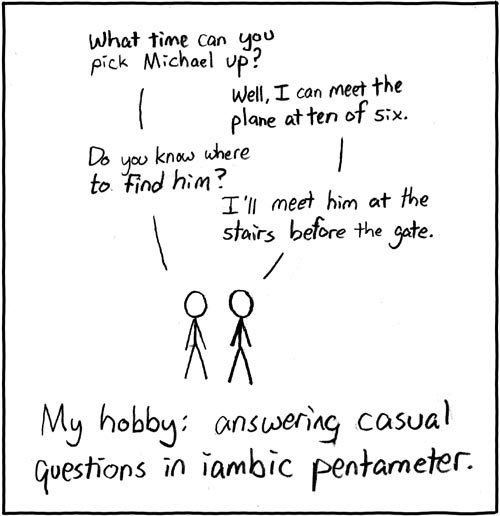


“I” in the sentence “Where am I?” is a diphthong, represented phonetically by the two symbols /aɪ/. For example, “a” in the sentence “Here’s a box” is one vowel sound, (phonetically I would write it as a schwa thus: /ə/. In the English language, a syllable must have one, and only one vowel sound – but it may also have one, and only one diphthong, which is two vowel sounds quickly run together so that to the uninformed ear, it seems to be one sound. And what is a syllable? What is a stress? What does ‘iambic’ mean? Perhaps you know it refers to a specific rhythm, the one that occurs when you have an unstressed syllable followed by a stressed syllable. Some will know that it refers to a kind of rhythm, most will say it means 10 beats to a line, and some that it means 10 syllables to a line. That is not what the words actually mean, but they are on the right track. But where do you start?Īsk just about anyone what they know about sonnets, and they will probably say “iambic pentameter”. Working – or playing – with sonnets is a fabulous way to learn about how language works, why poetry CAN be its highest form. Tagged consonants, Iambic Pentameter, rhythm, Shakespeare, sonnets A summer’s day


 0 kommentar(er)
0 kommentar(er)
